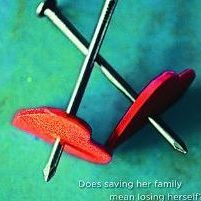 In 1964, is a 28-year-old bartender living in New York with her girlfriend and fellow lavender menace. But these twilight lovers’ relationship ends long before their twilight years.
In 1964, is a 28-year-old bartender living in New York with her girlfriend and fellow lavender menace. But these twilight lovers’ relationship ends long before their twilight years.
In 1963, Marvin Gaye asked, “Can I get a witness?”
In 1964, he got his answer: yes.
Thirty-eight, in fact.
Or so goes the story of the Kitty Genovese homicide, a story of Good-for-nothing Samaritans that’s been bought and told for half a century.
In 1964, Kitty is a 28-year-old bartender living in Queens, New York, with her girlfriend, fellow lavender menace Mary Ann Zielonko. Theirs is a relatively facile and hassle-free life. But these twilight lovers’ relationship ends long before their twilight years.
In spite of its reputation, Friday the 13th could have been a good day for Kitty and Mary Ann, as it marked their one-year anniversary. But superstitions die hard. So, too, do the victims of Winston Moseley, who proudly counts Kitty as his first Caucasian casualty.
When Moseley confines his crimes to women who, like him, are African-American, he gets away with murder. But why limit himself? Perhaps, he reasons, if he takes the life of someone… lighter, the police won’t take it lightly. So one fateful, hateful Friday in March, Moseley pounces on Kitty as she is heading home after her shift at the bar. He is a past customer, he doesn’t seem to know or care that Kitty is a lesbian. All he sees is an odd girl out at 3:19 in the morning. Unaccompanied, unsuspecting, unarmed.
While Moseley is wresting the breath from Kitty’s body, her neighbours are breathing life into the Bystander Effect. Far from the madding crowd, they are, according to the press, pathetic, apathetic, and absolutely abhorrent people who managed to come to their windows but not to Kitty’s aid.
It is this version of events, this affront to the homily Love Thy Neighbor, that the author debunks. There were far fewer than thirty-eight witnesses, he opines, and still fewer who declined to take action. But there is strength in numbers, and the myth that outlived Kitty holds as steady as Moseley’s knife.
The author challenges the veracity of the bystander myth with tenacity, sedulous attention to detail, and a commendable commitment to his subject. There is some superfluity, especially in the first few chapters, an excess of historical context that might disengage the reader. There is also the creation and fictionalization of dialogue, so certainly this account, like the original, is not entirely sacrosanct. That being said, there is a very real feel of authenticity here, and I appreciate that the author humanizes rather than sensationalizes the story. He portrays Kitty as witty and pretty and gritty—a person, not a victim. He writes about her life and her lesbianism in a way that is neither judgmental nor reverential and sufficiently shares Mary Ann’s recollections of her and Kitty’s romance, regrettable because of its brevity and unforgettable in spite of it.





